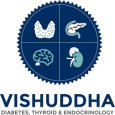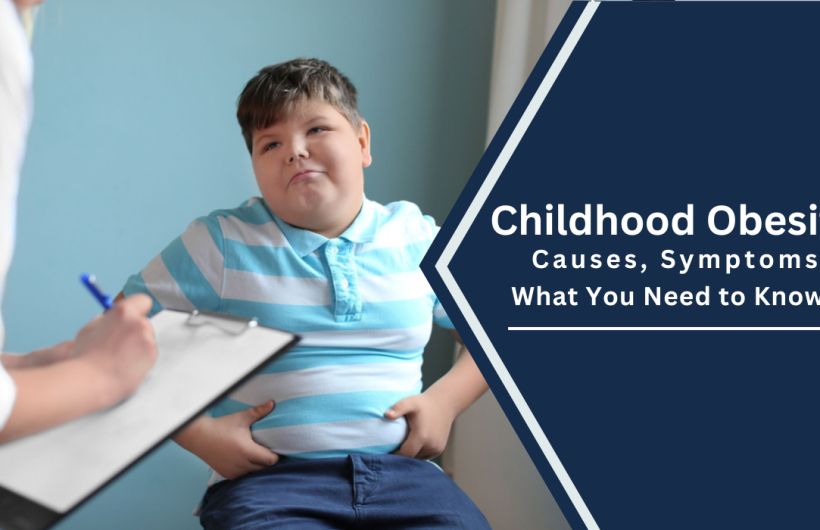Childhood obesity is a growing concern in today’s society, with significant implications for the health and well-being of our children. The rise in sedentary lifestyles, unhealthy eating habits, and lack of physical activity has contributed to this alarming trend. In this blog post, we delve into the causes and symptoms of childhood obesity, shedding light on the factors that contribute to its development and the warning signs to watch out for. By understanding the root causes and recognizing the symptoms, we can take proactive steps to prevent and address childhood obesity, ensuring a healthier future for our children.
What is meant by childhood obesity?
Childhood obesity refers to a medical condition characterized by excessive body weight and fat accumulation in children and adolescents. It occurs when a child’s weight exceeds the healthy range for their age, height, and sex, increasing the risk of various health problems. Obesity in childhood is typically determined using the body mass index (BMI), which takes into account the child’s weight and height. Factors contributing to childhood obesity include a combination of genetic, environmental, and lifestyle factors such as unhealthy eating habits, sedentary behaviors, lack of physical activity, and family history of obesity. Addressing childhood obesity is crucial to prevent long-term health complications and promote overall well-being.
Symptoms childhood obesity
Childhood obesity doesn’t have specific symptoms in the traditional sense, but it can manifest in various ways that indicate an unhealthy weight status. It’s important to note that these symptoms may vary in each child, and a comprehensive evaluation by a healthcare professional is necessary to determine if a child is experiencing obesity and to establish an appropriate course of action for their health. Some common signs and indicators of childhood obesity include:
- Excess body weight: Children with obesity often have a body weight that is significantly above the recommended range for their age, height, and sex.
- Body mass index (BMI): A high BMI, calculated using the child’s weight and height, can indicate obesity. BMI-for-age percentile charts are used to assess whether a child falls within the obese category.
- Increased body fat: Excessive body fat, especially around the abdomen, arms, and legs, can be a visible sign of obesity.
- Early onset of puberty: In some cases, children with obesity may experience early onset of puberty, marked by the development of secondary sexual characteristics earlier than expected.
- Poor self-esteem: Children with obesity may experience low self-esteem, body image issues, and social difficulties due to their weight, which can impact their emotional well-being.
Causes childhood obesity
Childhood obesity is a complex condition with multiple contributing factors. It’s important to note that these causes often interact with each other, and individual circumstances can vary. Addressing childhood obesity requires a multifaceted approach that includes promoting healthy eating habits, increasing physical activity, creating supportive environments, and providing education and support to families. The causes of childhood obesity include:
- Poor Diet: Unhealthy eating habits, such as consuming high-calorie, nutrient-poor foods and beverages, including fast food, sugary snacks, sodas, and processed foods, contribute to weight gain and obesity.
- Sedentary Lifestyle: Lack of physical activity and excessive screen time, such as prolonged periods of sitting and engaging in activities like watching TV or playing video games, reduce energy expenditure and promote weight gain.
- Genetics: Certain genetic factors can predispose children to obesity. A family history of obesity can increase the likelihood of a child developing obesity as well.
- Environmental Factors: The home and community environment can influence a child’s weight. Factors such as limited access to healthy foods, availability of unhealthy food options, and lack of safe spaces for physical activity can contribute to obesity.
- Socioeconomic Factors: Children from low-income backgrounds may have limited access to affordable, nutritious foods and fewer opportunities for physical activity, which can increase the risk of obesity.
- Psychological Factors: Emotional factors like stress, boredom, and using food as a coping mechanism can contribute to overeating and weight gain.
Treatment for obesity in childhood
The treatment for childhood obesity typically involves a comprehensive approach that addresses various aspects of a child’s lifestyle, habits, and overall well-being. Here are the key components of obesity treatment for children:
- Healthy Eating: Encouraging a balanced, nutritious diet is crucial. This involves promoting the consumption of fruits, vegetables, whole grains, and lean proteins, and limiting sugary and high-fat foods. Working with a registered dietitian can help create personalized meal plans and provide guidance on portion sizes and healthier food choices.
- Regular Physical Activity: Encouraging children to engage in regular physical activity is essential. Aim for at least 60 minutes of moderate to vigorous exercise each day. Activities can include sports, active play, walking, biking, or joining community programs. Making physical activity fun and involving the whole family can increase motivation and adherence.
- Behavior Modification: Addressing the underlying behaviors and attitudes towards food and physical activity is important. This can involve teaching portion control, mindful eating, recognizing hunger and fullness cues, and promoting positive body image.
- Supportive Environment: Creating an environment that supports healthy choices is crucial. This includes promoting healthy foods at home, limiting access to unhealthy snacks and beverages, reducing sedentary activities, and encouraging family involvement in meal planning and physical activities.
- Family Involvement and Support: Involving the entire family in the treatment process can have a positive impact. This includes providing education, setting goals, and implementing changes together as a family. Offering emotional support, encouragement, and positive reinforcement can help children maintain motivation and develop healthy habits.
- Medical Management: In some cases, medical intervention may be necessary. This may involve working with healthcare professionals, such as pediatricians, dietitians, and psychologists, to monitor health, address any underlying medical conditions, and provide additional support and guidance.
Childhood obesity prevention
Preventing childhood obesity requires a comprehensive approach that includes promoting healthy eating habits, regular physical activity, education, and supportive environments. By emphasizing nutritious food choices, limiting screen time, fostering active lifestyles, and involving the whole family, we can help children establish lifelong habits that support their overall health and well-being.
Call To Action
For expert guidance and support in addressing childhood obesity, we encourage you to consult with Dr. Moxit Shah. Dr. Shah is a renowned specialist in pediatric obesity management and is dedicated to helping children lead healthier lives. With his expertise and compassionate approach, Dr. Moxit Shah can provide personalized strategies and support for preventing and treating childhood obesity. Take the first step towards a healthier future for your child by scheduling a consultation with the Best Endocrinologist in Ahmedabad Dr. Moxit Shah today. Together, we can make a positive difference in combating childhood obesity and promoting lifelong wellness.






